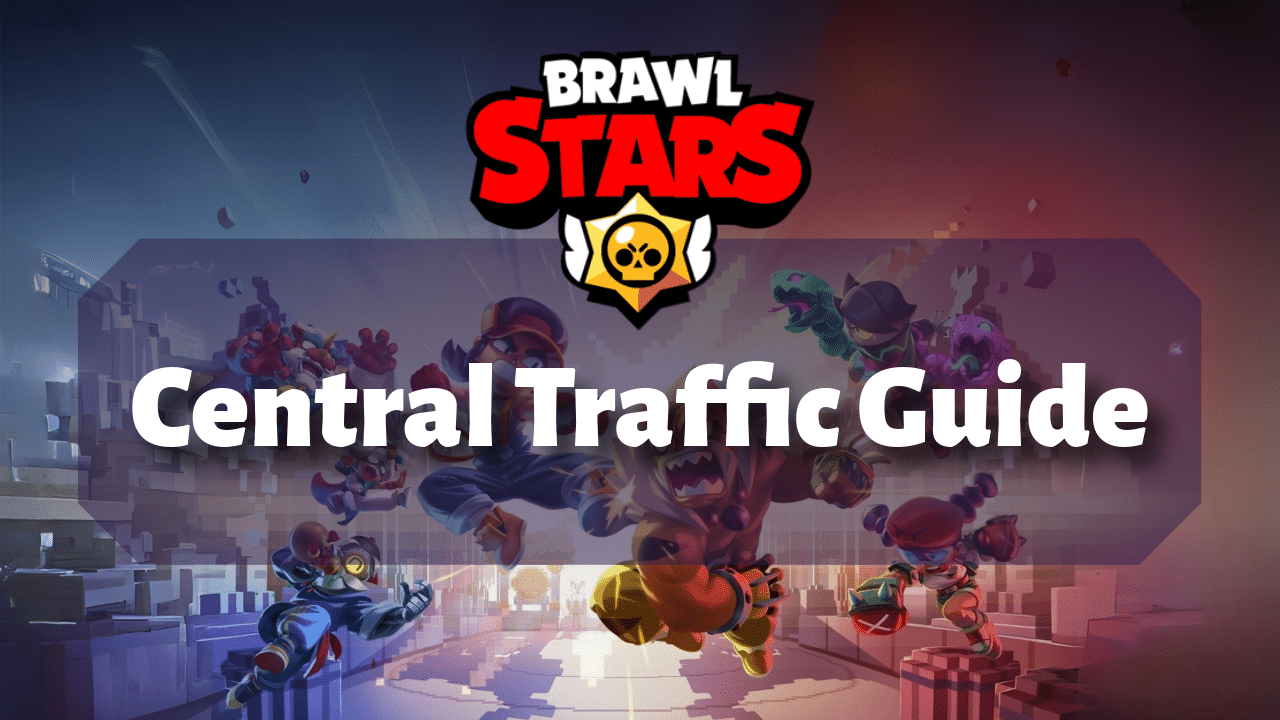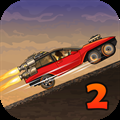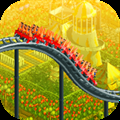
- Actionshow 01
- Hay Block – 36
- Wooden Box – 32
- Wooden Barrel – 3
- Wooden Fence – 20
- Cactus – 8
- Bush – 156
Brawl Stars Central Traffic Guide: Overview
Brawl Stars Central Traffic is a dynamic Brawl Ball map designed to create intense engagements through its compact structure and strategically placed obstacles. The map features narrow lanes that force players into close-quarters combat, while the scattered walls and bushes provide opportunities for both defensive plays and aggressive advancements. The defining feature of the map is its central congestion point—a heavily contested area where most of the action unfolds. This chokepoint determines the pace of the match, as controlling it can dictate which team gains the upper hand in both offensive pushes and defensive holds.
The layout of Brawl Stars Central Traffic naturally encourages a mix of defensive standoffs and sudden offensive bursts. Due to the tight spaces and limited movement options, teams must carefully navigate the map to maintain control without overcommitting. A well-placed wall or a hidden brawler in a bush can disrupt an entire push, making awareness and adaptability crucial for success. While the center lane offers the fastest route to the goal, it is also the most dangerous, requiring precise execution and coordinated efforts to break through the enemy defense.
The presence of obstacles not only provides cover but also influences team compositions and playstyles. Brawlers with strong close-range capabilities excel at contesting the middle area, while mid-range fighters can control space and apply pressure from safer positions. Throwers gain an advantage by utilizing the walls to attack without exposing themselves, while tanks can use cover to close in on enemies before unleashing powerful attacks. The combination of walls, bushes, and tight chokepoints makes map awareness and strategic positioning essential, rewarding teams that can effectively coordinate their movements and exploit weaknesses in the enemy formation.
Winning on Brawl Stars Central Traffic requires a balance between aggression and control. Teams must be proactive in securing advantageous positions while ensuring they do not leave themselves vulnerable to counterattacks. Quick rotations, well-timed ability usage, and strategic ball movement can create scoring opportunities, while maintaining defensive structure is equally important to prevent sudden breakaways. Whether by overpowering the opposition with a coordinated rush or by patiently controlling space and waiting for the perfect moment to strike, success on this map hinges on teamwork, adaptability, and precise decision-making.
Brawl Stars Central Traffic Guide: Map Layout and Key Features
Brawl Stars Central Traffic is structured around three primary lanes—left, right, and center—each contributing to the overall strategic depth of the match. The center lane serves as the primary battleground, drawing most of the action due to its direct path to the goal. However, its narrow width, combined with well-placed walls, creates a chokepoint that forces teams into intense engagements. Because of this, controlling the center lane often determines which team maintains pressure and dictates the pace of the match. Teams that can efficiently manage space in this area will find it easier to transition into offensive plays, while those that struggle to hold ground may find themselves constantly on the defensive.
The side lanes of Brawl Stars Central Traffic provide alternative routes for pushing forward, offering a way to bypass the heavily contested center. These lanes are narrower and contain obstacles that can either serve as defensive cover or act as barriers that restrict movement. Players can use these lanes to outmaneuver enemies, setting up flanking opportunities or forcing the opposition to split their attention. The side lanes are particularly useful for brawlers that excel in one-on-one duels or rely on sneaky approaches rather than direct engagements. Teams that neglect these lanes risk allowing their opponents to gain positional advantages or set up unexpected attacks that disrupt defensive formations.
Bushes are strategically positioned throughout the Brawl Stars Central Traffic map, creating opportunities for ambush plays and stealth-based tactics. Players can use these bushes to hide and catch enemies off guard, making them valuable zones for setting up surprise attacks or regaining control after a lost engagement. However, bushes also pose a defensive risk if left unchecked, as hidden opponents can suddenly emerge to turn the tide of a battle. Teams must regularly clear bushes using attacks or gadgets to maintain vision and prevent enemies from gaining an unseen advantage.
The goal areas are fortified with defensive structures that add an extra layer of complexity to scoring attempts. These structures act as barriers that force attackers to approach from specific angles, making it harder to land clean shots on goal. Breaking these defensive structures can open up easier scoring opportunities, but doing so often requires coordinated efforts, the use of Supers, or prolonged pressure. Teams that effectively use these obstacles to their advantage can create strong defensive setups that are difficult for opponents to break through, while attackers must find creative ways to maneuver around them or force defenders out of position.
The combination of tight lanes, strategic bush placements, and defensive structures ensures that Brawl Stars Central Traffic remains a balanced and engaging map. Teams that can effectively control key areas while adapting to shifting engagements will find the most success. Whether through calculated positioning, smart use of cover, or aggressive flanking maneuvers, understanding the map’s layout is crucial for both offensive and defensive strategies.
Brawl Stars Central Traffic Guide: Brawler Selection and Role Distribution
The tight, enclosed spaces of Brawl Stars Central Traffic make it an ideal battleground for brawlers that specialize in close-range combat, high burst damage, and area control. Due to the abundance of walls and choke points, long-range brawlers generally struggle unless they can find ways to stay safe while applying consistent pressure. Instead, teams benefit from compositions that include tanky frontliners, aggressive damage dealers, throwers who can control key areas, and supportive brawlers that enhance team survivability.
Short-Range Brawlers: Close-Quarters Combat Experts
Short-range brawlers thrive in Brawl Stars Central Traffic’s tight lanes, where their burst damage can quickly eliminate opponents. Shotgun-wielders and dashers are strong picks, excelling in ambushes and close combat. These brawlers play a key role in breaking enemy defenses and creating openings for their team. Shelly dominates with her high burst damage and Super, allowing her to break walls and surprise enemies from bushes. Edgar is another strong option, using his self-healing attacks and Super jump to close gaps and secure quick eliminations.
Mid-Range Brawlers: Controlling Space and Applying Pressure
Mid-range brawlers are essential for maintaining control and pressuring opponents while staying safe. They contest the center lane, chip away at enemy health, and support teammates in fights. A well-played mid-range brawler can dictate the pace of the match. Griff thrives in this role, using his wide attack and wall-breaking Super to disrupt enemies and clear paths. Lola is another excellent choice, applying pressure with her Clone ability while staying at a safe distance, making it harder for enemies to push forward.
Tanks: Frontline Powerhouses
Tanks excel on Brawl Stars Central Traffic thanks to the many walls that help them avoid long-range fire. They absorb damage, push enemies back, and break defensive structures near the goal. A strong tank can anchor both offense and defense, ensuring constant pressure. Frank is a powerhouse with his massive health and stunning Super, allowing him to control fights and create scoring chances. Jacky is another solid pick, using her area damage to punish grouped-up enemies and her Super to pull opponents in for quick eliminations.
Throwers: Area Control Specialists
Throwers shine on this Brawl Stars Central Traffic map, taking advantage of obstacles to damage enemies while staying safe. They control key zones, force opponents to reposition, and make it difficult for enemies to push. Their ability to attack over walls makes them invaluable for holding space. Sprout is an excellent choice, with bouncing projectiles that hit enemies behind cover and a Super that blocks paths. Barley also performs well, dealing continuous damage with his attacks and using his Super to flush out defenders near the goal.
Support Brawlers: Sustaining Pressure and Team Coordination
Support brawlers provide healing, shields, or utility that helps their team stay in control. They extend the longevity of frontline teammates and assist in key moments. While they may not deal the most damage, their abilities can turn the tide of a match. Poco is a great option, healing his teammates while chipping away at enemies with his wide attack. Byron also excels, offering long-range healing while simultaneously applying pressure to opponents, keeping his team strong throughout the fight.
Building a Balanced Team Composition
A strong team composition for Brawl Stars Central Traffic typically includes a mix of aggressive short-range or tanky brawlers to push forward, mid-range fighters for sustained pressure, and throwers or supports for additional control and utility. Understanding how each role interacts with the Brawl Stars Central Traffic map’s layout allows teams to maximize their strengths while minimizing weaknesses, creating a balanced approach to both offense and defense.
Brawl Stars Central Traffic Guide: Heist on Central Traffic
Heist on Brawl Stars Central Traffic presents a unique challenge with its blend of narrow lanes, defensive structures, and multiple attack routes. The safes are positioned behind protective walls, forcing teams to balance aggressive pushes with strong defensive positioning. Combat is fiercest in the center, where most engagements take place, but the side lanes offer alternative routes that can be used to bypass enemy defenses or create openings for a coordinated assault. Teams must carefully decide whether to commit to a central push or split their efforts to apply pressure from multiple angles.
Attacking effectively requires breaking through enemy defenses to create direct access to the safe. Brawlers with wall-breaking abilities can clear crucial obstacles, making it easier to land consistent damage. Tanks and close-range brawlers thrive by soaking up hits and forcing defenders out of position, while throwers can use cover to deal chip damage from a distance. Coordinated Supers and gadgets play a major role in maintaining pressure, preventing defenders from regrouping, and securing crucial damage on the safe. Timing these abilities correctly can be the difference between a successful push and a wasted opportunity.
Defending the safe is just as important as attacking, requiring strong positioning and constant awareness. Tanks and high-damage brawlers positioned near the safe can act as a frontline deterrent, while long-range brawlers and throwers can keep enemies at bay before they get too close. Destroying specific walls near the enemy safe can expose it to long-range attacks, making it harder for opponents to defend. Quick decision-making is key, as teams need to be ready to switch between defense and counterattacks, taking advantage of moments when opponents overextend or leave gaps in their positioning.
Certain brawlers stand out in Heist on Brawl Stars Central Traffic due to their ability to control the map and apply consistent pressure. Tanks like Bull and Darryl can charge in and deal heavy damage once they reach the safe, forcing enemies to react. Long-range brawlers such as Colt and Brock provide valuable lane control and can break walls to create better sightlines for their team. Throwers like Barley and Dynamike excel at harassing the safe from behind cover, making it difficult for defenders to stay in position. Support brawlers such as Pam and Penny contribute by placing turrets that create additional pressure, forcing opponents to divide their attention.
Brawl Stars Central Traffic Guide: Early Game Strategy and Control
At the start of the match, focus on securing the center lane while watching for side-lane flanks. Mid-range brawlers and tanks should push aggressively to establish positioning, while throwers or support brawlers provide backup from behind cover. Clearing bushes on Brawl Stars Central Traffic early prevents surprise attacks, and controlling the center forces enemies into less favorable side routes. Strong early map control creates opportunities for offensive pushes and potential goals.
⭐ Offensive Approaches and Scoring Opportunities
Breaking through enemy defenses requires teamwork and smart plays. One effective strategy is overpowering opponents in the center lane, using tanks or aggressive brawlers to destroy walls and open a clear path to the goal. Another approach is flanking through the side lanes while teammates distract opponents in the middle. Gadgets and Supers that disrupt enemy formations, remove obstacles, or provide brief invulnerability can break defensive setups. Precise passing and well-timed shots maximize scoring chances, especially under pressure.
⭐ Defensive Tactics and Counterplay
Defending against aggressive pushes requires strong positioning and awareness. Keeping a tank or high-damage brawler near the goal serves as a last line of defense, while mid-range or thrower brawlers control enemy advances from a distance. Using obstacles to funnel enemies into predictable paths makes takedowns easier. Destroying key walls in enemy attack routes can disrupt their approach and force them into weaker positions. Keeping vision on enemy movements and predicting their strategies helps prevent last-minute goals.
⭐ Late-Game Considerations and Overtime Play
As the match progresses, destroyed walls and fewer obstacles lead to a more open battlefield. Mobility becomes crucial, as direct confrontations become more common. In overtime, with all walls gone, long-range brawlers gain an advantage due to the lack of cover. Maintaining pressure without overextending is key, as a single mistake can lead to a decisive goal. Coordinating Super abilities, positioning, and ball control becomes even more important in securing victory.
Success on Brawl Stars Central Traffic comes down to smart positioning, teamwork, and adaptability. Controlling the early game sets the pace, while strategic offensive plays and solid defensive tactics determine the outcome. Recognizing when to push aggressively or hold back can make the difference between victory and defeat. As the match progresses, adapting to the changing map conditions, especially in overtime, is essential. Teams that communicate well, capitalize on opportunities, and maintain pressure without overextending will have the best chance of securing the win.
Brawl Stars Central Traffic Guide: Conclusion
Brawl Stars Central Traffic is a map that rewards teams with strong coordination, adaptability, and precise execution. Success hinges on a delicate balance between aggression and control, requiring teams to dominate key areas while being mindful of enemy movements. The ability to maintain early-game pressure, execute well-planned offensive pushes, and hold a solid defensive formation throughout the match is what separates the best teams from the rest.
Brawler composition plays a critical role, with each type of brawler serving a unique purpose in shaping the battlefield. Tanks and short-range brawlers must navigate tight spaces to apply pressure, mid-range fighters need to control engagements and dictate pacing, while throwers and support brawlers provide crucial utility to sustain pressure. Knowing when to engage, when to retreat, and how to maximize each brawler’s strengths can turn the tide of the match.
As the game progresses, Brawl Stars Central Traffic map conditions evolve, forcing teams to rethink their strategies. Early obstacles that provided cover and strategic positioning may be destroyed, shifting the focus to open-field engagements where mobility and precision become even more valuable. Overtime eliminates defensive structures, placing an even greater emphasis on proper spacing, quick decision-making, and perfectly timed shots. Those who can adjust to these transitions seamlessly will maintain their edge even in the most chaotic situations.
Ultimately, Brawl Stars Central Traffic is a test of both mechanical skill and tactical awareness. Teams that communicate effectively, capitalize on their advantages, and anticipate enemy movements will find the greatest success. Whether by executing a coordinated offensive push, making a clutch defensive stop, or securing a game-winning goal in overtime, victory belongs to those who can outthink and outplay their opponents at every stage of the match.













